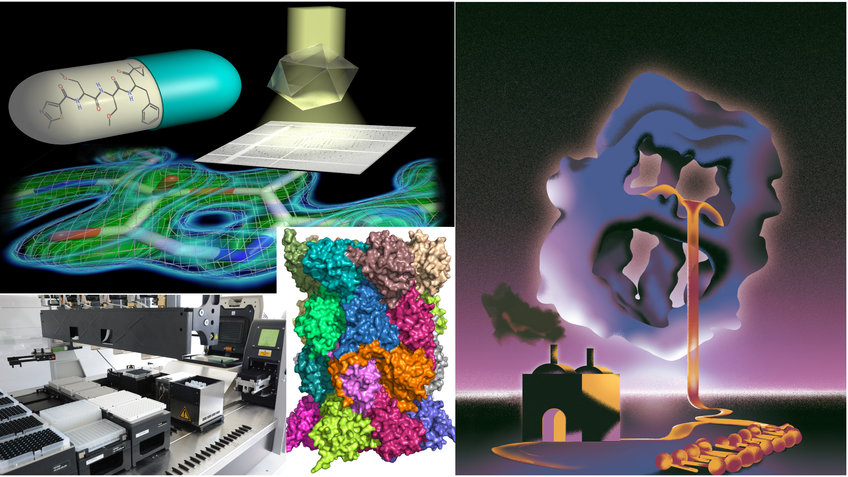
Structural Biochemistry and Mechanisms
The recent years of whole genome studies have enforced a view, in which most cellular constituents do not act in isolation, but as part of large assemblies. A large spectrum of biological reactions and tasks essential for the survival of cells are performed by these macromolecular complexes, also referred to as molecular machines. These biochemically labile assemblies are composed of either protein only, or proteins bound to nucleic acids (DNA or RNA). Prominent examples are the proteasome, the fatty acid synthase, the nucleosome, the ribosome, and the spliceosome. As cellular homeostasis is governed by macromolecular complex function, their mis-function is also a central cause for human disease, making the in-depth study of functional mechanisms essential for the investigation of disease etiology.
In our research, we apply mechanistic biochemistry and X-ray crystallography to study large macromolecular complexes involved in proteostasis and fatty acid metabolism. Owing to the labile nature and complexity of interrogating these molecular machines, we are engaged in the development of biochemical tools to purify and stabilize them, as well as arrest them in distinct functional states. We also develop methods for X-ray data collection, phasing, structure determination, and refinement of large complexes. To study dynamic aspects of their function we apply time-resolved approaches.


